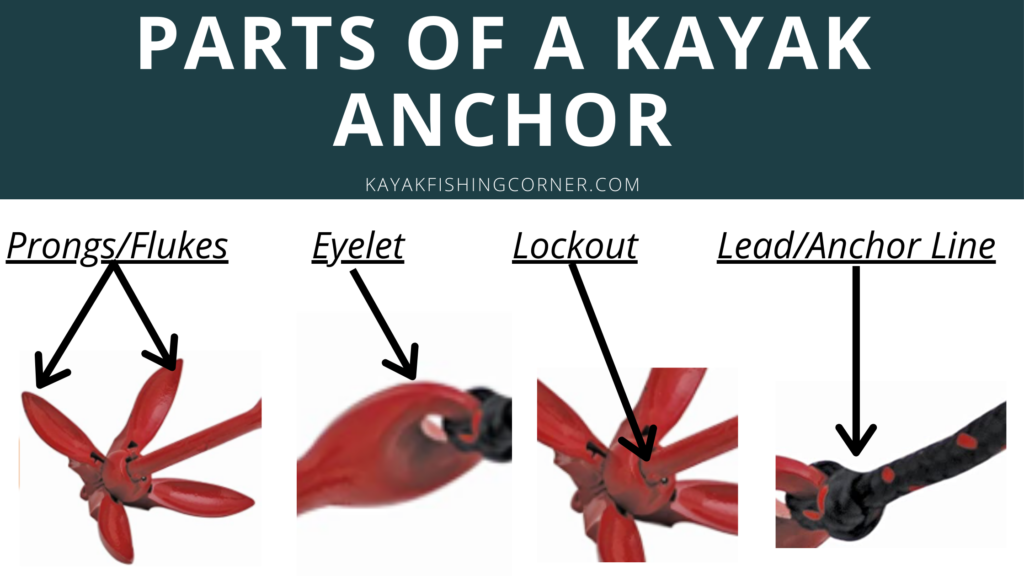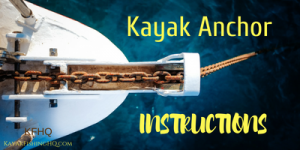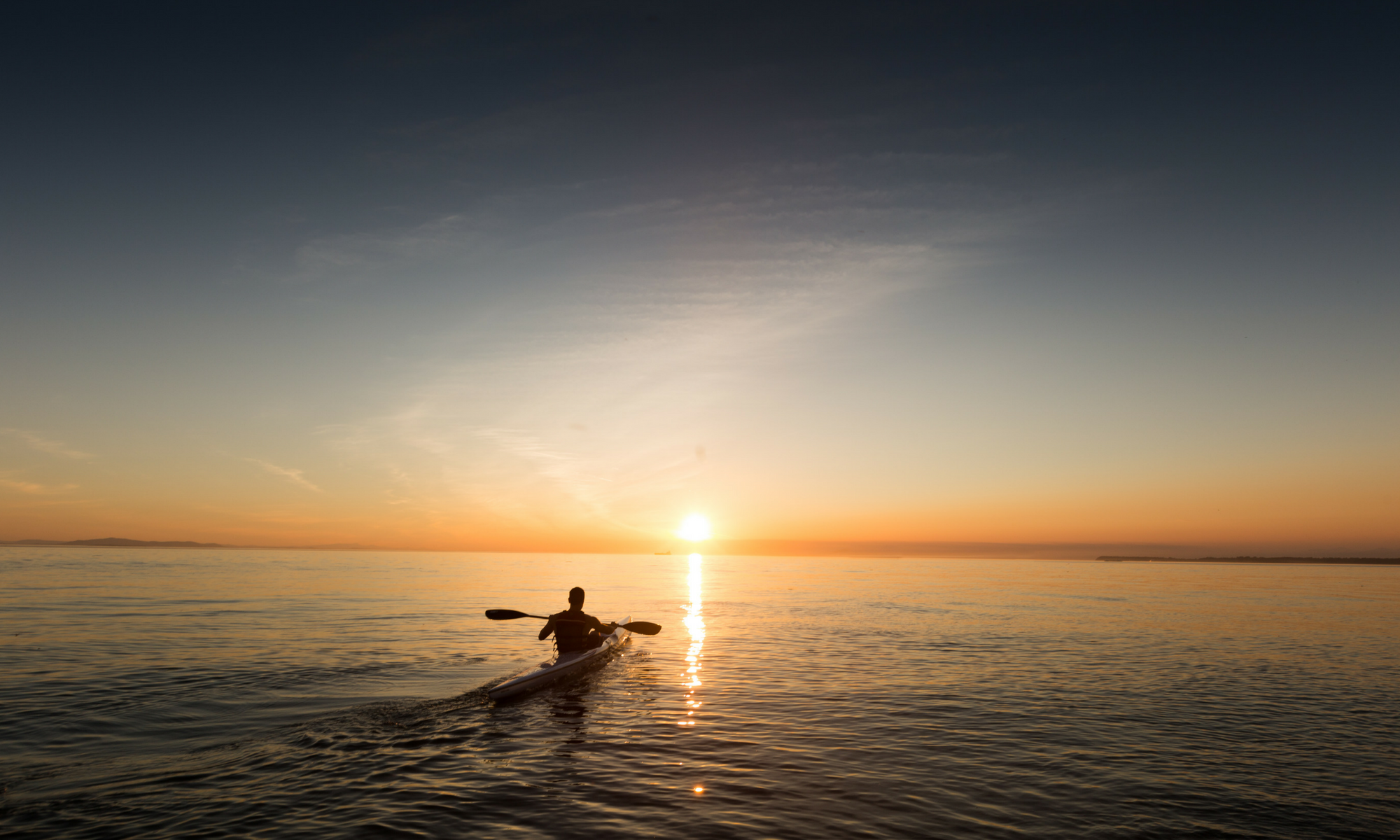I have recently received several questions and comments with members asking How to Use Kayak Anchors. I understand the reason that people are interested in kayak anchors, they are extremely important tools. That’s why we have ranked The 5 Best Kayak Anchors!
Remaining stationary is imperative if you are trying to accurately cast from a kayak. I have briefly discussed this topic in a previous post, but I decided to create this guide dedicated to explaining How to Use Kayak Anchors. Reading this post should help you avoid frustration and spend more time catching fish!
Jump Ahead To:
HOW TO USE KAYAK ANCHORS: INTRO

First, as an Amazon Associate, I earn from qualifying purchases.
If you’ve ever been around watercraft, chances are you are familiar with the tool that is optimized to keep them stationary. This essential tool is the anchor, and it has been stopping boats for hundreds of years. The form of these modified weights has gradually improved over time, and several variations have been introduced.
One of the smallest is the fishing kayak anchor, which I have analyzed in detail on my Kayak Anchor Ultimate Guide. If you are unfamiliar with the kayak anchor, you should read that post first.
Parts of a Kayak Anchor

HOW TO USE KAYAK ANCHORS: GUIDE
Please note: This post contains affiliate links. An affiliate link means that we may earn advertising/referral fees if you make a purchase through our links.
Shortcut to Kayak Anchor Review
This is a simple guide explaining how to use kayak anchors. The general steps will apply to almost everyone, but some of the smaller details will depend on your particular situation. These variable factors include kayak model, body of water, weather, etc. Please remember these factors while reading the instructions below. I encourage you to tweak this guide to fit your personal needs. Now, let’s get started…
BRIEF OVERVIEW
- Choose the correct kayak anchor
- Clean and prepare your kayak anchor
- Transport and attach to your kayak
- Organize and store rope
- Choose optimal location and deploy kayak anchor
- Feed rope until anchor reaches bottom
- Tie up remaining rope
- Prepare to fish or complete desired activity
DETAILED INSTRUCTIONS

- Many people overlook the beginning step of learning how to use kayak anchors. A few days before your excursion, make sure that you have the correct kayak anchor for your destination (weight and rope length). General foldable kayak anchors (like the one I recommend on the bottom of this page) work well in most situations.
- On the day before your excursion, make sure that your anchor is clean and functioning. If this is your first time, make sure to familiarize yourself with your new anchor. Once you are satisfied, pack it in your desired container (nylon bag usually provided) and prepare it for transportation. Pay attention and avoid tangling the rope.
- On the day of your outing, transport your anchor with your kayak to reach your destination. When you arrive, attach the anchor to your fishing kayak. The location and method of attachment is a matter of personal preference. I remove it from my nylon bag and tie/clip the anchor a rear cleat. Ensure the rope will not impede or restrict your casting.
- Store your rope in an organized manner. I loop mine around the cleat and wrap any excess in circles and secure it with one twist tie (similar to a garden hose). This will make the next step much quicker and easier by helping avoid knots.
- Choose an optimal time and location for deploying your kayak anchor. Untie your rope so it can extend while the anchor falls. When you’re ready, carefully toss it underhand and begin feeding the rope as the anchor falls.
- Several factors influence the time it takes for the anchor to reach the bottom. Keep ensuring the rope is being extended and avoid tangles and knots. I typically realize it reaches the bottom when the rope stops and the line is taught in my hands.
- When the anchor hits bottom, it’s once again time to store any excess rope. Keep the rope fairly tight as you wrap to avoid knots. Note: In swift currents, the extended rope may not end up as a straight vertical line with the anchor directly below. It might be more diagonal, and that is perfectly acceptable.
- When the kayak anchor is secured and the excess rope is wrapped, you can begin preparing to fish (or complete any other desired activity). Remember to remain alert and aware of your surroundings.
- When using lighter kayak (like a tandem pedal kayak) a kayak anchor can be even more beneficial, as it gives the light kayak a little extra ability to push against the current or winds!
Additional Tips
- Utilize or purchase a portable fish finder that displays depth.
- Avoid getting appendages wrapped up in the rope while deploying your anchor.
- Mark lines on the anchor rope with a permanent marker every 5 or 10 feet. You can use different colors to differentiate each measurement. I use the rainbow color order ROYGBIV to help remember.
Another great way to “anchor” your kayak is by using a kayak outrigger. These are particularly helpful in the ocean (check out the best model of kayak outrigger for the ocean). They make inflatable kayak outriggers as well.
HOW TO USE KAYAK ANCHORS: RECOMMENDED ANCHOR
(Commissions Earned)
There are several types of kayak anchors that are currently being sold online and in stores. I decided to include information for my favorite, the Compass Foldable Kayak Anchor. This anchor is sold as part of a kit that includes a dry storage bags and a buoy. It is very high quality and will last a long time, and it is backed with a money back guarantee. It is reasonably priced, especially compared with the competition!
If you are looking for another product that makes kayak fishing more enjoyable, you should look into kayak trolling motors (just make sure you get the right trolling motor battery)!
HOW TO USE KAYAK ANCHORS: CONCLUSION
I hope that this guide has helped you learn how to use kayak anchors. It will probably take time to modify and perfect the steps listed above, but it is important that they fit your personal situation. If you have any questions or comments, please post them at the bottom of this page. That will enable other members of the KFC community to learn as well. You can also message me with any private questions. Learn more about the history of different kinds of boat anchors.
Kayak anchors aren’t tremendously heavy, but it does add an additional piece of gear to an already crowded kayak! We think that kayak trolleys are helpful in moving all of your accessories from one spot to to the next. Check out the Top 3 Kayak Trolleys for Kayak Fishing!
Learn more about the general principles behind anchoring marine craft of all shapes and sizes!
HOW TO USE KAYAK ANCHORS: COMMENTS
Do you have other tips for learning how to use kayak anchors? Have you ever experienced issues with your kayak anchor? Please share your knowledge and experiences with the KFC community by posting a comment below.
Related Popular Posts




How heavy are these kind of anchors? Will I be able to carry it along with me without too much work?
Hi Dave,
You can find this style of kayak anchor at anywhere between 2.5 and 20lbs. That said, we tend to suggest that our readers look at the ~5 pound models. These are light enough to carry, yet heavy enough to keep your kayak safely anchored!
See you on the water!
– David Scott
Do these anchors actually “grab” onto the bottom of the lake? It seems like that will be important to keep my kayak in place!
Hi Tyler,
There are two kinds of models. Some of the models “grab” with prongs, while others are simply weighted. Either will work for anchoring a fishing kayak, though we are pretty fond of the models shown above and those on our Fishing Kayak Anchor post. The most important thing to remember is to buy a kayak anchor that has a long enough rope that it will allow the anchor to hit bottom then drift at a 45 degree angle. That is the best way to keep your kayak appropriately anchored!
Anchors away!
– DS
Have you ever pulled up your anchor and found a “treasure” from the depths attached to it? My cousin pulled up a beer can with a tooth stuck in it. Too bad it wasn’t a gold tooth
Hi Alex!
The only treasure we’ve ever found is mud, unfortunately! Though, sometimes when I am using my Kayak Fish Finder, I wonder if my display is showing me fish, or a secret shipwreck! Probably just fish, but its fun to imagine! Too bad the tooth you discovered wasn’t a gold tooth, maybe next time, right?!
Keep on fishing’
-DS
Great tips! I love using the anchor while I’m near the shoreline. Keeps me in the right spot and doesn’t require constant paddling!
Hi Janes,
Yes, that is one of the biggest benefits of a kayak anchor. I quickly grew tired of paddling to “stay in place” as well. I really like the light weight and small size of the kayak anchor. Easy to travel with. Easy to deploy. Easy to retract from the water. If you want a more “high tech” way to anchor yourself to one spot (even if digitally), you should look into getting a GPS Trolling Motor. You can push the button and, bang, just like that, you are anchored to one particular spot by virtue of the GPS in the trolling motor. High tech or low tech, better to stay over the fish with ease!
-DS